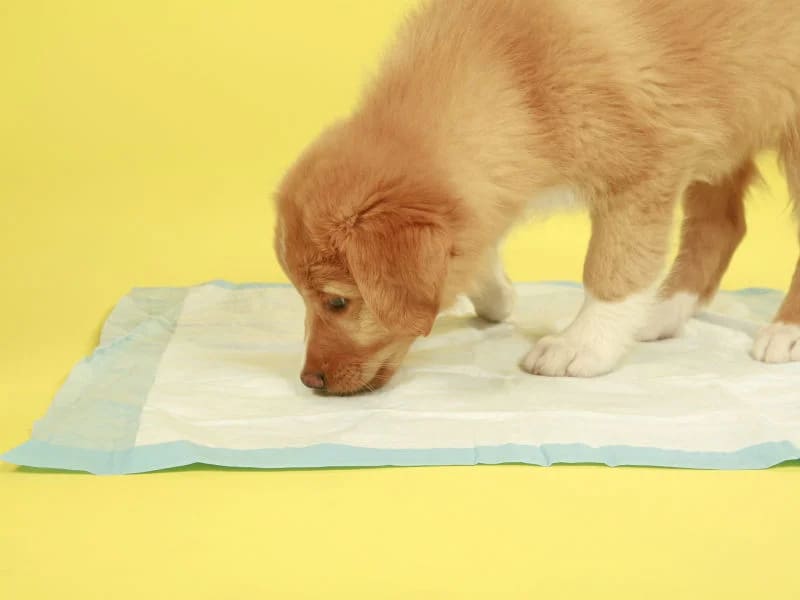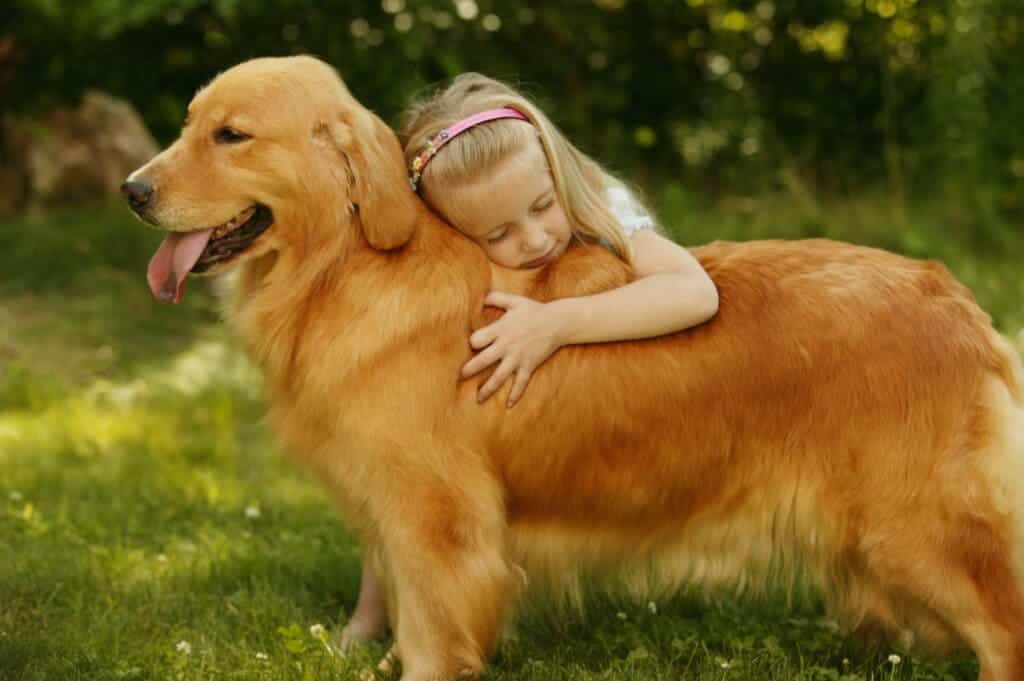Table of Contents
Easiest dogs to train

Some dog breeds are particularly easy to train because of their intelligence, willingness to learn, and versatility. Top contenders include Labrador Retrievers, Golden Retrievers, Border Collies, and Poodles. thats why these dogs are considered as the easiest dogs to train. Pet parents looking for a trainable companion will find these breeds perfect as they are quick learners and thrive in obedience training. They are an absolute pleasure to train and a treasured addition to any household because of their intellect, eagerness to learn, and affinity for positive reinforcement methods.
Because of their outgoing and sociable personality, Labrador Retrievers are very trainable dogs. They are anxious for the approval of their owners and react well to techniques of positive reinforcement. Like other retrievers, golden retrievers have a sweet disposition that makes them easy to train and a strong desire to please. These breeds are well-liked by families because of their versatility and caring nature.
Border Collies are distinguished for their extraordinary intelligence and diligence. They are popular in obedience and dog sports because of their rapid learning curve and love of mental challenges. Poodles, available in three sizes, are renowned for their agility and obedience, making them highly trainable canines.
. They are simple to train for a variety of jobs and activities because of their intelligence and desire to obey.
also have a look on Master Obedience: Efficient Dog Training Hand Signals.
Easiest Dogs to Potty Train

Due to their intelligence and affection, Labrador Retrievers are known to be very responsive to potty training. They are successful in recognizing where and when they need to relieve themselves since they have an inbuilt drive for obeying their masters and they pick up commands quickly. Their ability to adjust to crate training methods also speeds up the toilet training process, since crates can be an effective tool for creating a pattern and rewarding proper bathroom behavior.
Similarly, Golden Retrievers, adored for their kind nature and devotion, demonstrate remarkable cooperation and learning ability during the potty training process. Because of their keen sense of hearing, they are able to read cues from their owners and communicate effectively about appropriate potty behavior.
Owners can quickly and successfully potty train Poodles by establishing specific elimination areas and employing positive reinforcement strategies to encourage desired behaviors consistently. Poodles’ intelligence, cleanliness, and receptiveness to learning make them adept at understanding where and when to eliminate waste, further facilitating the training process.
Easiest Small Dogs to Train

Small dog breeds including Papillons, Cavalier King Charles Spaniels, and Bichon Frises are notable for their intelligence and trainability despite being so small. Despite their small stature, papillons excel in obedience and agility trials due to their sharp brain and agility.
They quickly acquire new commands with great skill.For pet owners looking for a trainable tiny breed, they are a delight to deal with because of their eagerness to participate in training exercises.
Due to their loving disposition and desire to please, Cavalier King Charles Spaniels are eager to learn and rapidly adapt to new experiences. Because of their receptive nature and innate intelligence, dogs pick up new orders and actions quickly, making it relatively easy for owners to train them. Cavalier King Charles Spaniels are ideal for tasks involving advanced obedience training as well as mastering basic obedience.
In a comparable way, Bichon Frises are very responsive to training because to their lively personalities and keen intellect. These tiny pups love the challenges that come with training exercises and thrive on cerebral stimulation. Bichon Frises gladly participate in training sessions and rapidly pick up desired habits when given consistent and positive reinforcement, developing a close relationship with their owners in the process.
In a nutshell Papillons, Cavalier King Charles Spaniels, and Bichon Frises are small in size, but they make up for it in intelligence and trainability. Their kind dispositions and eagerness to learn make them the perfect picks for anyone looking for tiny dog breeds that are easy to teach. Positive reinforcement, perseverance, and patience can help these endearing friends grow into well-mannered, trained family members quite rapidly.
German Shepherd: The Epitome of Trainability

With a unique blend of intelligence, devotion, and adaptability, German Shepherds have deservedly gained their reputation as one of the easiest dog breeds to teach. They are excellent prospects for a variety of jobs, including law enforcement, service, and caring for beloved family pets, because to their sharp intellect and steadfast commitment.
These amazing dogs are excellent at obedience training; they pick up orders fast and with enthusiasm and accuracy. Their desire to satisfy their handlers motivates them to work reliably and devotedly on duties. German Shepherds approach any assignment with focus and commitment, regardless of its complexity, be it basic orders or more complicated tasks like scent detection or search and rescue activities.
German Shepherds are particularly good at using positive reinforcement tactics since they are quick to respond to compliments and treats. This constructive method not only improves the dog’s training experience but also strengthens the relationship between the dog and handler.
German Shepherds are highly adaptable and excel in specialized positions where their intelligence and agility truly shine. They exhibit incredible bravery and competence in their roles as police and assistance dogs, displaying their capacity to pick up and carry out challenging tasks under pressure.
German Shepherds are also excellent workers in a variety of sectors because of their versatility, which enables them to move between diverse tasks and situations with ease. German Shepherds are dependable working dogs, loving family members, and faithful companions who never fail to impress with their extraordinary trainability and everlasting devotion.
Positive Reinforcement: A Key to Success
Positive reinforcement is a vital component of dog training that fosters mutual respect, communication, and trust between pet parents and their furry friends. This method works with dogs of any breed or size by rewarding desired behaviors with toys, praise, or treats. This creates a pleasant learning environment that motivates dogs to repeat those behaviors.
Pet parents can better convey their requirements to their dogs and build stronger bonds between them by employing positive reinforcement tactics. Positive reinforcement encourages dogs to make the right decisions by focusing on rewarding desired behaviors rather of using punishment to correct undesired ones.
Labrador Retrievers, Golden Retrievers, and Border Collies, renowned for their intelligence and desire to please, respond particularly well to this method. They are strongly motivated by rewards and thrive on mental stimulation, making them responsive to training techniques that use positive reinforcement.
Positive reinforcement training fosters a healthy relationship based on mutual respect, cooperation, and trust between dog and owner.Dogs come to link excellent behavior with rewards, which makes them happier and more submissive to their companion.
Dogs learn best when they receive timely and consistent rewards for desired behaviors, therefore consistency is essential when using positive reinforcement strategies. Pet parents may successfully teach their canine friends manners, obedience, and even entertaining tricks with this gentle and rewarding technique if they have the patience, tenacity, and abundance of goodies and praise.
Family Dogs: Trainable and Loving Companions

Family Dogs: Intelligent and Caring Pets
A few breeds stand out as great options for families looking for a cuddly and trainable friend. Three of the simplest breeds of dogs to train and raise as family pets are Labrador, Golden, and Cavalier King Charles Spaniels. Their kind dispositions, flexibility, and love of socializing make them valued members of the family.
Due to their gregarious and outgoing personalities, labrador retrievers are particularly suitable for households with young children. Similar in nature, golden retrievers frequently build close relationships with family members of all ages. Recognized for their loving nature and eagerness to obey. Cavalier King Charles Spaniels are happy to spend time with their families and participate in events together.
Crate Training: A Tool for Success
When it comes to house training pups or adjusting dogs to new situations, crate training is undoubtedly a useful technique for pet parents. Dogs can have their own den-like room in which to unwind, sleep, and feel safe when their crate provides them with a secure and comfortable space.
The capacity of crate training to promote constructive behaviors and discourage bad habits is one of its main benefits. Since dogs are den animals by nature, crates serve as a good replica of the warm. Enclosed areas that dogs naturally go toward when they want to unwind. Crates, when introduced and used correctly. Can help reinforce good behavior by providing dogs with a special place to go. When they need some alone time or just want to relax.
Border Collies and Shetland Sheepdogs, renowned for their intelligence and desire to obey, respond best to crate training.These breeds are excellent candidates for crate training techniques because they value routine and structure. Pet parents may help their dogs feel comfortable and confident while encouraging good behavior by introducing the crate into a regular training regimen and using it as a tool for positive reinforcement.
Creating a Positive Experience: Gradual Introduction of the Crate for Dogs
It’s important to gradually introduce the crate to the dog and give them a favorable experience with it. To foster a good association and lessen any fear or resistance to enter the crate. Associate the crate with enjoyable activities like meals, treats, and quiet time. Furthermore, it’s important to always approach crate training with empathy and tolerance. Letting the dog become used to the crate at their own pace.
With all factors taken into account, crate training may be a very useful tool for pet parents. Giving dogs a secure and pleasant area of their own and assisting in the introduction of good behavior. Crate training, when done correctly and in conjunction with positive reinforcement methods. Can help foster a happy relationship between pet parents and their dogs.
Conclusion:
Some breeds of dogs are easiest to train because they are more intelligent, trainable, and eager to obey than others when it comes to dog training. Because of their intelligence, eagerness to learn, and upbeat personalities. Labrador Retrievers, Golden Retrievers, Border Collies, and Poodles are some of the easiest dog breeds to train. Consistent training methods and positive rewards are effective for these breeds. Whether for obedience training, toilet training, or specialized jobs.By being aware of the distinctive qualities of every breed and customizing training methods

